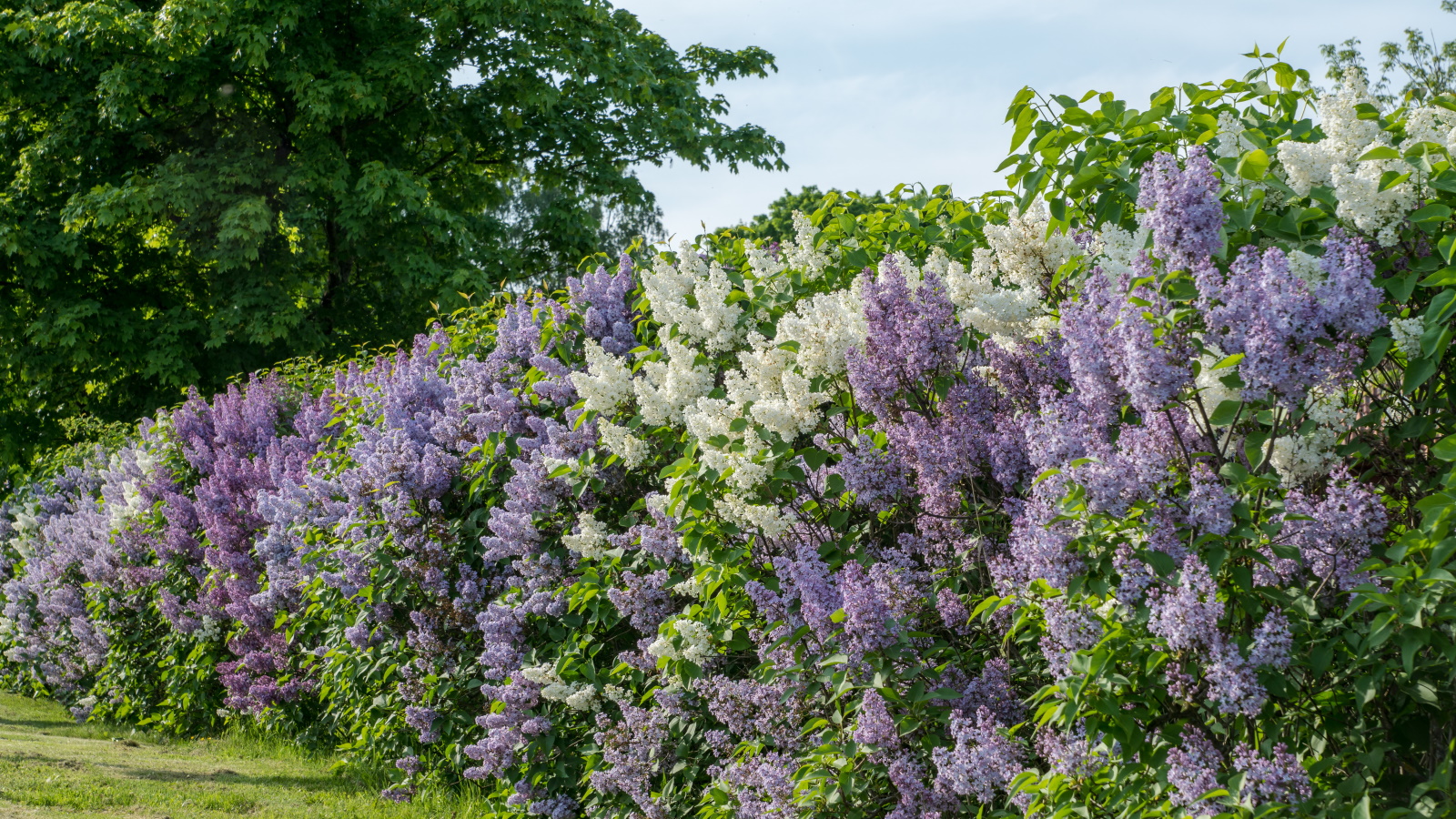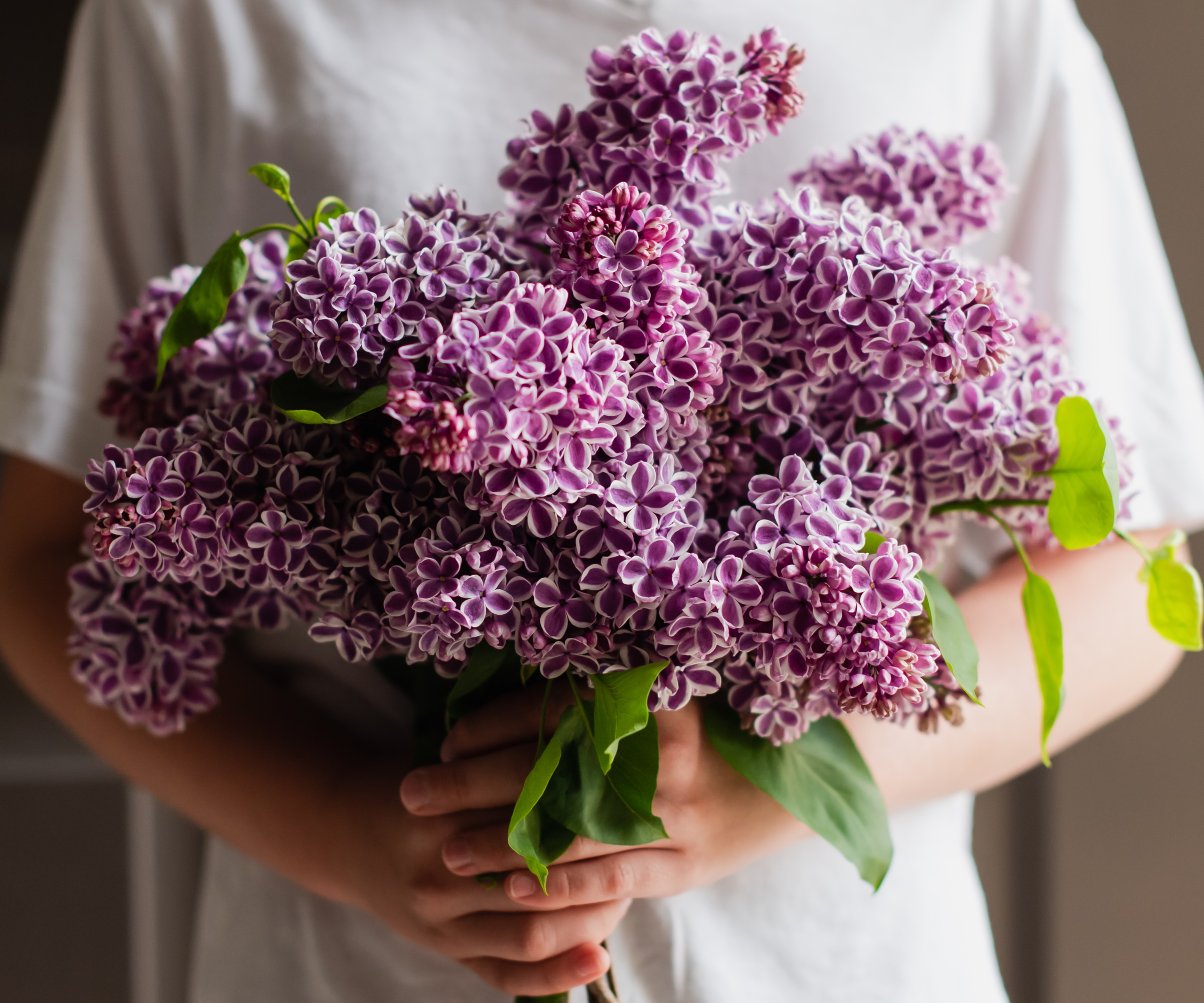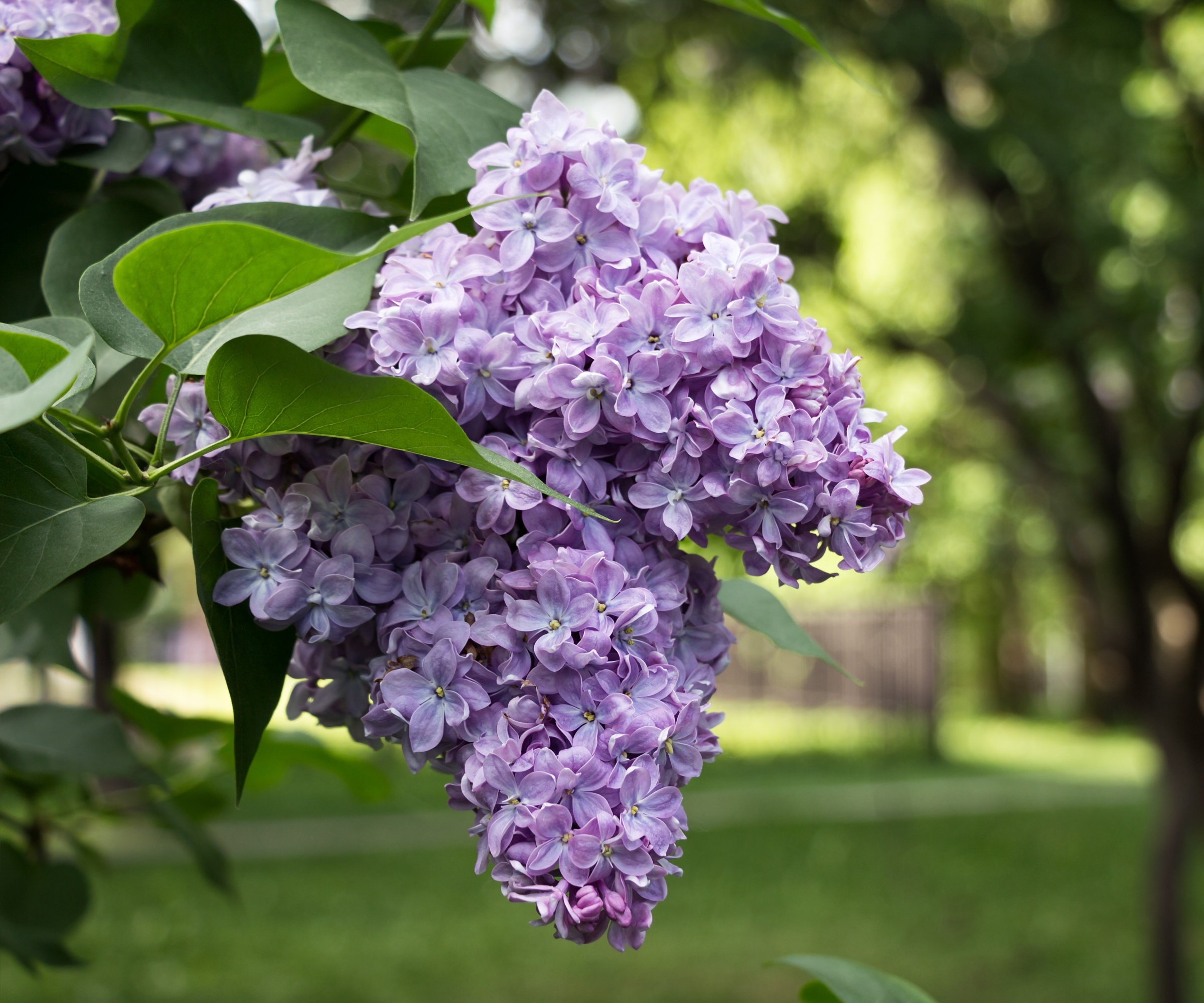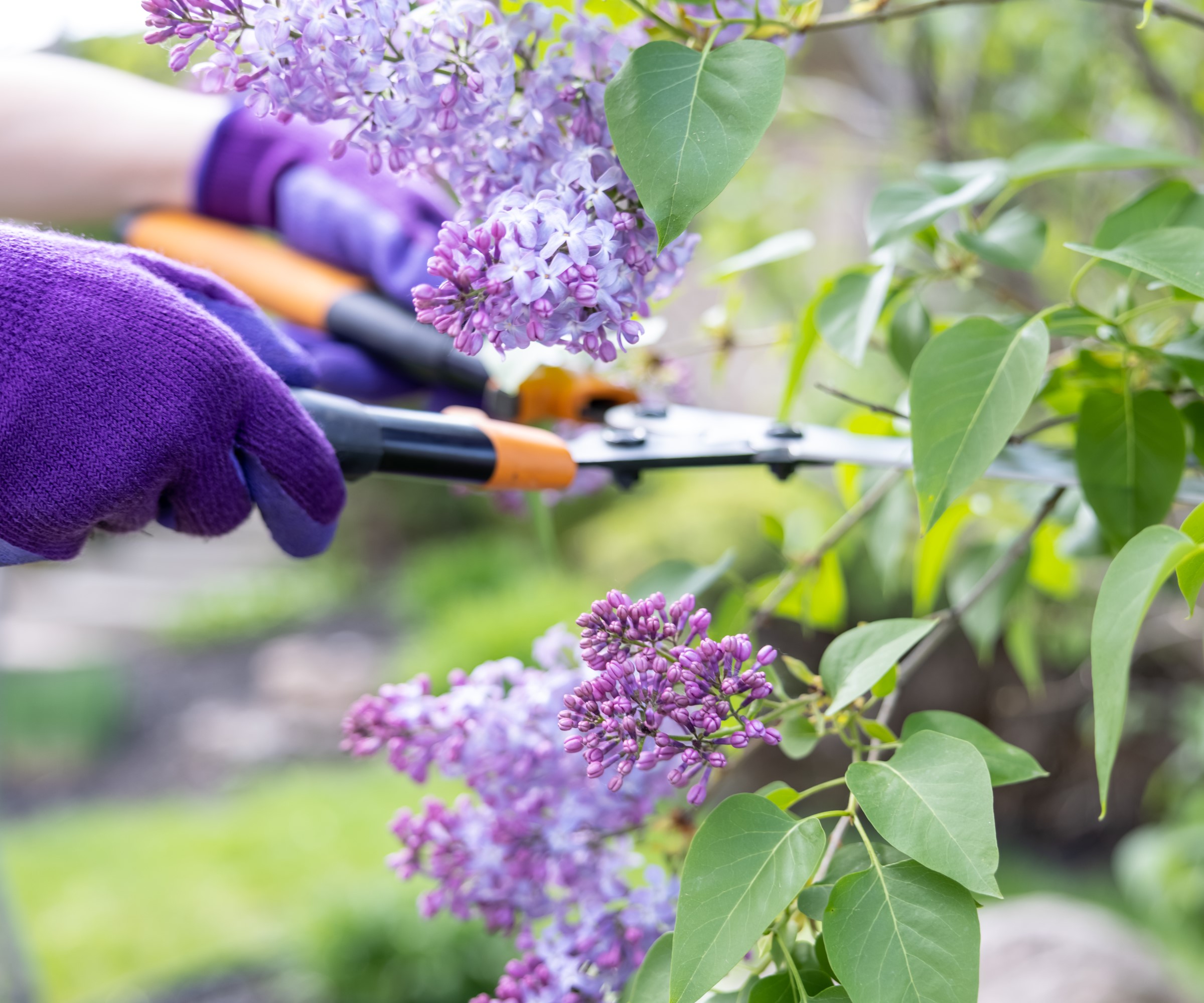
Lilacs are hardy spring flowering shrubs and trees, producing masses of romantic blooms in shades of purple, mauve and white. These plants are famed for their scent, filling yards with a floral fragrance that is hard to beat. One of my favorite varieties of lilac is Syringa vulgaris 'Sensation', seen in the image below, which produces deep purple petals that each have a delicate white edge. Surely, it is impossible not to love this flower?
Native to Southern Europe and parts of Asia, the common lilac, Syringa vulgaris, is typically found growing in scrubland or at the edge of wooded areas. When considering how to grow lilac, this deciduous plant has a preference for bright, sunny positions and well-draining soil. As a rule of thumb, the more sun your lilac shrub gets, the better it will bloom.
Lilacs are typically thought of as low-maintenance plants and are not considered heavy feeders. However, an occasional feed for your spring flowering shrubs can help with plant health and ensure that your lilacs bloom. Here, plant experts discuss how and when to fertilize lilacs, including the best products to use.

When and how to fertilize lilacs
Lilacs are often considered one of the best flowering shrubs, filling yards with fragrant blooms. Lilacs grow well in US hardiness zone 4 to US hardiness zone 7 and can be planted in borders or containers.
It is best to err on the side of caution when feeding lilac shrubs, fertilizing only once per year. Over-fertilizing your plants can often do more harm than good.
When to fertilize lilacs

'If you are going to fertilize your lilac you should do it in early spring,' says Sam Niemann, garden expert and founder of Grown by Design, a boutique landscape design firm based in San Diego. Fertilizing lilacs is another job to add to your spring gardening checklist.
'Lilac plants, while not considered heavy feeders, can benefit from occasional fertilization,' Sam adds, 'and if you are going to do so, the best time is early spring.'
Sam advises that a second feeding in mid to late fall can help if you think your plant needs a boost. 'This twice-yearly fertilization schedule has proven very effective in my garden, promoting healthy plants and abundant blooms.'
If your lilac shrub looks healthy, happy, and full of blooms, it is most likely doing just fine without any need for fertilizer. While you might think applying fertilizer once or twice a year will encourage even more blooms, over-feeding can often do more harm than good. Put simply, lilac plants will not bloom if you overfeed.
In the right position and with the right conditions, lilac plants will do just fine without the need for fertilizer. These plants can grow up to 3 feet per year, meaning that if you buy a starter lilac plant, available from Walmart, they will quickly grow into a small shrub within a few years without any need for fertilizer.
How to fertilize lilacs

Fertilizing lilac plants when they do not require any extra nutrients will harm flower production. 'Too much nitrogen in the soil will prevent the lilac from blooming,' says Bert Bast, garden expert and owner of Bast Brothers Garden Center.
Understanding the process of fertilization and soil health is, therefore, important. Excessive amounts of nitrogen in the soil will cause your lilac shrub to produce foliage at the expense of flowers. For this reason, it is a good idea to avoid using mulch that contains decomposed grass clippings or coffee grounds near your lilac plants, as this mulch will be extremely high in nitrogen.
'Lilacs should not need regular fertilization,' Bert says, 'so if you are going to feed your shrubs, stick with an organic product that is either an all-purpose fertilizer or one that is low in nitrogen.' There are many products found online, such as this organic fertilizer, available to order from Walmart, applying only once a year and using sparingly.
If your lilac shrub is displaying signs of stress, such as poor growth or defoliation, it might be a good idea to check the pH of your borders using something like this soil meter, available from Walmart. Lilac shrubs grow best in neutral to slightly alkaline soils (6.5 to 7.0 pH). Your lilac plant might benefit from adding lime to the soil which is proven to make the ground more alkaline. There are many products found in garden stores and online, such as this organic lime soil conditioner, available from Walmart.
This organic soil conditioner will help to modify soils, increasing alkalinity in the soil and ground. This can help with plants such as hydrangeas and lilacs.
FAQs
Should I fertilize lilac shrubs grown in pots?
Lilac shrubs prefer to grow in garden borders where their roots can spread freely. Dwarf or smaller varieties can be grown in containers, but they will require watering and feeding more than plants grown in the ground.
For lilacs grown in pots, I would suggest using a general-purpose fertilizer in early spring, carefully diluting the feed in water, and following the instructions on the back of the packaging.
Lilacs are not known to be heavy feeders, but an annual feed in spring can help provide your shrubs with the nutrients they need to thrive. However, if your plants seem happy and flower well, it might not be necessary to reach for the fertilizer. For more information on plants and shrubs to feed in spring, see our guide on how and when to fertilize hedges.







